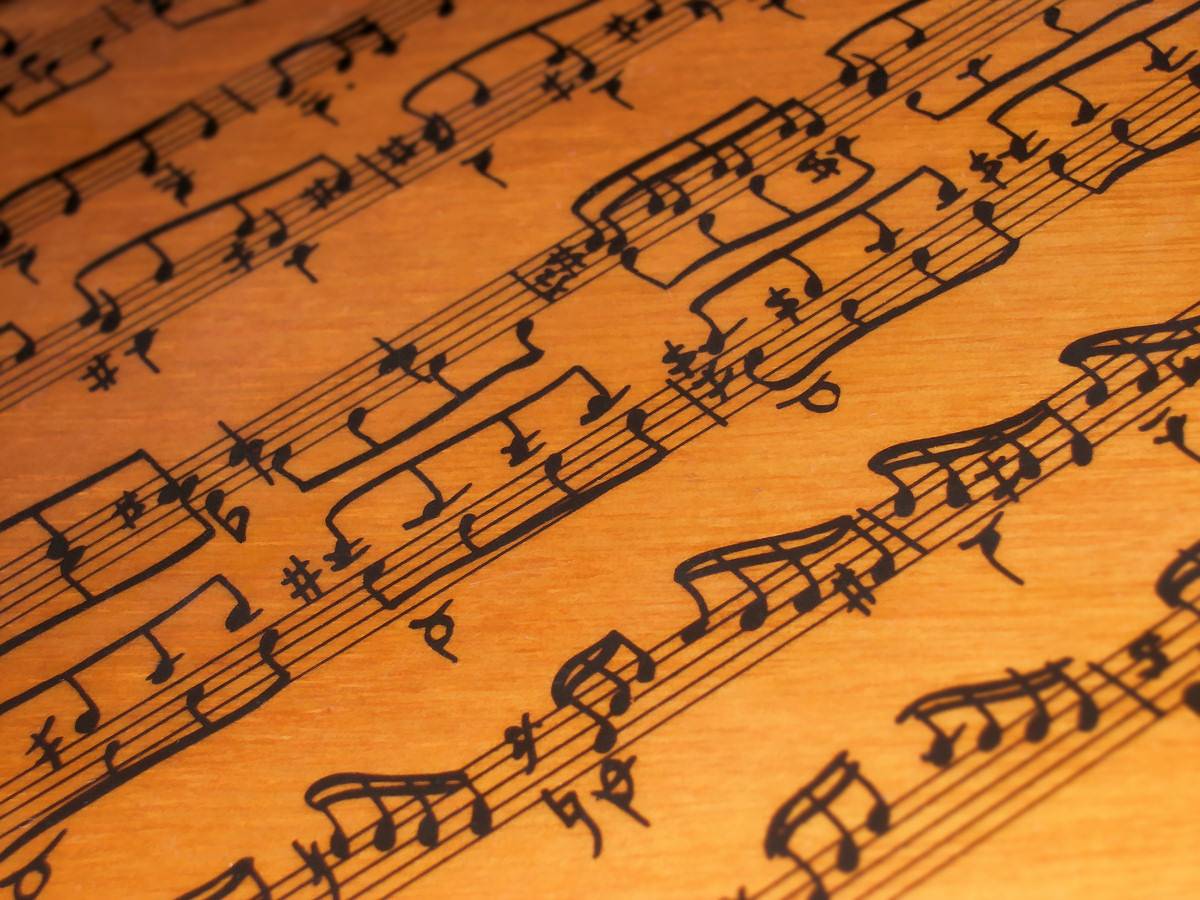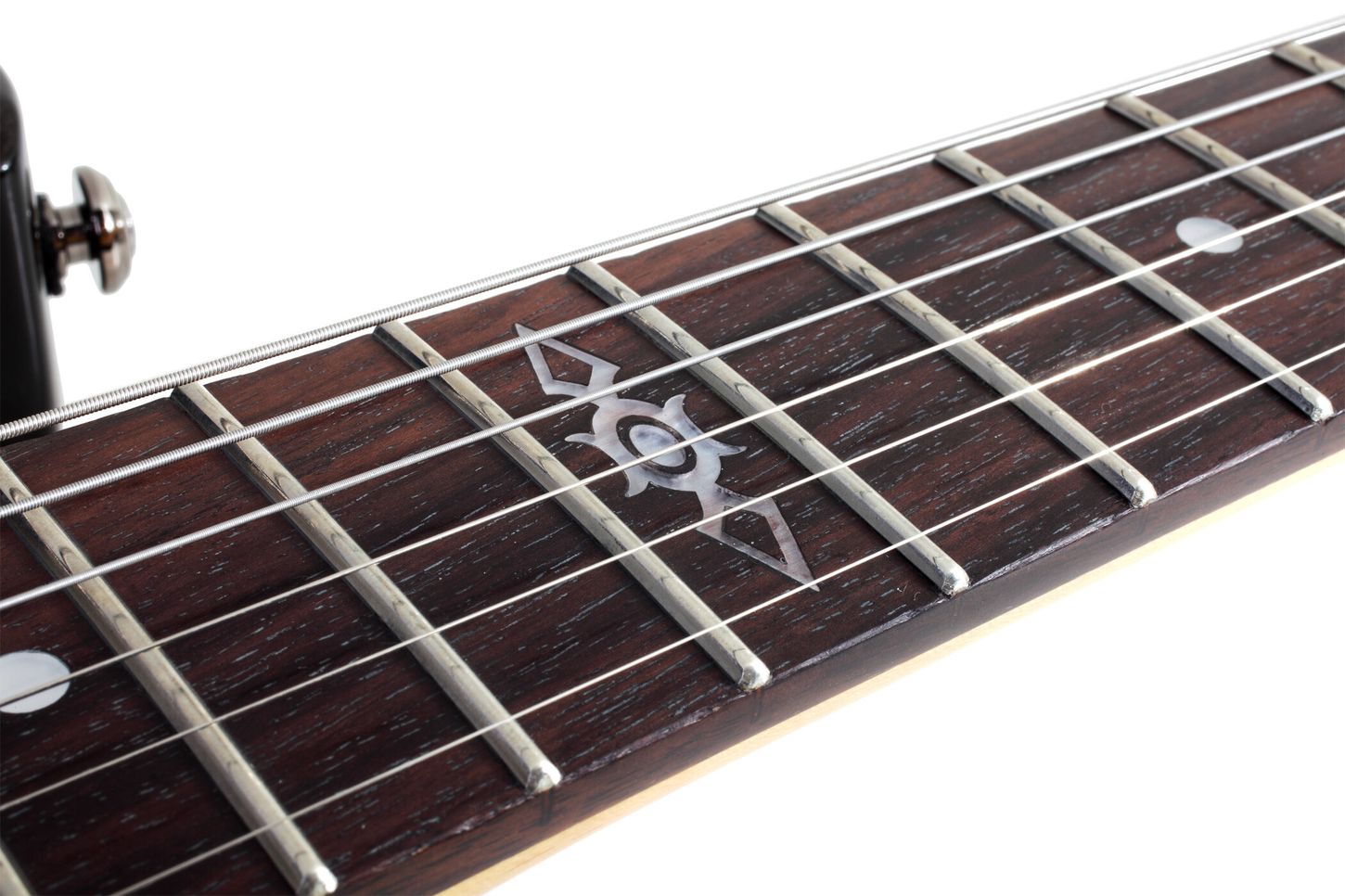Home>Genres>Classical>How Many Semitones Does Indian Classical Music Divide The Octave Into?


Classical
How Many Semitones Does Indian Classical Music Divide The Octave Into?
Published: November 1, 2023
Discover the intricate division of the octave in Indian Classical Music. Explore the mesmerizing world of classical melodies and learn about the unique semitone divisions.
(Many of the links in this article redirect to a specific reviewed product. Your purchase of these products through affiliate links helps to generate commission for AudioLover.com, at no extra cost. Learn more)
Table of Contents
Introduction
Welcome to the fascinating world of Indian Classical Music! With its rich history spanning over centuries, Indian Classical Music has captivated audiences with its intricate melodies, rhythmic patterns, and emotive expressions. One of the fundamental aspects of this ancient art form is its unique approach to dividing the octave into semitones.
In Western music, the octave is divided into twelve equal semitones, forming the basis for scales and chords. However, Indian Classical Music takes a different approach, dividing the octave into smaller intervals known as shrutis. These shrutis play a vital role in creating the distinct melodic structures and intricate ornamentations that define the essence of Indian Classical Music.
Understanding the division of the octave in Indian Classical Music requires delving into the intricate concepts of raga, tala, and shruti. By exploring these concepts, we can gain a deeper appreciation for the beauty and complexity of this ancient musical tradition.
Throughout this article, we will take a closer look at how Indian Classical Music divides the octave into semitones and the significance of shruti in shaping the melodic aspects of this art form. So, let’s embark on this musical journey and explore the mesmerizing world of Indian Classical Music!
Overview of Indian Classical Music
Indian Classical Music is a complex and intricate art form that has been nurtured and refined over centuries. It is rooted in ancient Indian traditions and is known for its improvisational nature and emphasis on emotional expression. The music is primarily divided into two major traditions: Hindustani music in the North and Carnatic music in the South.
Indian Classical Music is based on the concept of raga, which is a melodic framework consisting of specific notes, ascending and descending patterns, and characteristic phrases. Each raga has its own mood and evokes a specific emotional response in the listener. These ragas serve as the foundation for improvisation and exploration within the boundaries of a specific framework.
The rhythmic aspect of Indian Classical Music is governed by tala, a rhythmic cycle or pattern that provides a framework for the composition or improvisation. Talas are characterized by a set number of beats and have different rhythmic divisions and accent patterns. The combination of raga and tala creates a structured yet flexible framework for performers to create and explore.
Indian Classical Music is traditionally performed in a live setting, with a soloist accompanied by a tabla player on percussion and sometimes other accompanying instruments like the sarangi, sitar, or flute. The interaction between the vocalist or instrumentalist and the accompanist is an integral part of the performance, with each musician responding and improvising in real-time.
One of the unique aspects of Indian Classical Music is its emphasis on ornamentation and intricate melodic embellishments. Techniques such as meend (gliding between notes), gamak (graceful oscillations), and taans (rapid melodic patterns) are employed to add depth, emotion, and virtuosity to the music.
Indian Classical Music is not only a means of entertainment but also a deeply spiritual and meditative practice. It is believed to have the power to evoke different emotions, transport listeners to a transcendent state, and even have healing effects. The pursuit of perfection and mastery in this art form requires years of dedicated practice and a keen understanding of its intricate nuances.
Now that we have gained a broad overview of Indian Classical Music, let’s dive deeper into the structure of the octave and the division of semitones within this fascinating musical tradition.
Structure of the Octave in Indian Classical Music
In Indian Classical Music, the octave is divided into smaller intervals known as shrutis. Unlike Western music, where the octave is divided into twelve equal semitones, Indian Classical Music recognizes a greater degree of microtones within this range.
The Indian musical scale is based on a system called the “Saptak,” which consists of seven notes. These notes are known as “Swaras” and are equivalent to the Western concept of pitches. The seven swaras are Sa, Re, Ga, Ma, Pa, Dha, and Ni. These swaras form the fundamental building blocks of the melodic framework in Indian Classical Music.
The octave in Indian Classical Music is represented by the Saptak, which starts with the note “Sa” and ends with the higher octave “Sa.” In between these two “Sa” notes, there are a total of twelve semitones, similar to Western music. However, the division of these twelve semitones into shrutis is where Indian Classical Music diverges.
While the Western equal-tempered tuning system divides the octave into twelve equally spaced semitones, Indian Classical Music recognizes a much larger number of microtones within this range. The exact number of recognized shrutis varies between different schools and styles of Indian Classical Music, but commonly, 22 shrutis are acknowledged.
This division of the octave into a larger number of shrutis allows for more nuanced melodic expressions and intricate ornamentations. It enables musicians to explore microtonal intervals and create subtle variations in pitch and tonal color, adding depth and complexity to their performance.
The structure of the octave in Indian Classical Music is not limited to the linear progression of ascending and descending notes. It also involves different note combinations known as “Swara patterns” or “Alankars,” which serve as exercises for practicing and mastering the melodic aspects of the music.
By understanding the structure of the octave in Indian Classical Music and the division of shrutis, musicians are able to navigate and explore the vast melodic possibilities within this ancient art form. The precise intonation and control over these microtones are essential for capturing the essence of each raga and bringing out its unique characteristics.
Now that we have a foundational understanding of the structure of the octave in Indian Classical Music, let’s explore the division of the octave into semitones and the significance of shruti in shaping the melodic aspects of this art form.
The Division of the Octave into Semitones
In Indian Classical Music, the division of the octave into semitones is not done in the same way as in Western music. While Western music divides the octave into twelve equal semitones, Indian Classical Music recognizes a larger number of microtonal intervals known as shrutis.
The concept of shruti is fundamental to Indian Classical Music. Shrutis are the microtonal intervals that exist between two consecutive notes in the octave. These intervals are smaller than the Western semitone and allow for more nuanced and intricate melodic expressions.
Traditionally, Indian Classical Music recognizes 22 shrutis within the octave. These shrutis are not fixed and are flexible, allowing musicians to create subtle variations in pitch and tonal color. Each shruti has its own unique characteristics and is associated with a specific emotional expression.
The division of the octave into shrutis provides a framework for improvisation and ornamentation in Indian Classical Music. It allows musicians to explore microtonal nuances, slide between notes, and add grace notes and embellishments to their performance. These subtle variations in pitch and tonal color contribute to the aesthetic beauty and emotional depth of the music.
Unlike Western music notation, which uses specific symbols to represent semitones, Indian Classical Music relies on the oral tradition, where knowledge and understanding of shrutis are passed down through generations of musicians. Learning and mastering the precise intonation and control over these microtones is an intricate and lifelong process for musicians.
It is important to note that the division of the octave into shrutis may vary between different schools and styles of Indian Classical Music. Each system may recognize a slightly different number of shrutis or have their own unique interpretation of microtonal intervals. This diversity adds to the richness and complexity of Indian Classical Music.
Overall, the division of the octave into shrutis in Indian Classical Music allows for a greater degree of melodic exploration and expression. It adds depth, nuance, and intricate ornamentations to the music, making it a truly distinct and captivating art form.
Now that we understand the division of the octave into shrutis and their significance in Indian Classical Music, let us delve deeper into the role of shruti in shaping the melodic aspects of this ancient musical tradition.
The Role of Shruti in Indian Classical Music
In the realm of Indian Classical Music, shruti holds a significant and indispensable role in shaping the melodic aspects of this ancient art form. Shruti refers to the microtonal intervals that exist between two consecutive notes in the octave.
Shruti is not merely a theoretical concept but is deeply ingrained in the practice and performance of Indian Classical Music. It is through the careful control and understanding of shruti that musicians are able to bring out the unique characteristics, emotions, and flavors of each raga.
One of the key elements of Indian Classical Music is the concept of intonation. Unlike Western music, which often follows equal-tempered tuning, Indian Classical Music employs a form of just intonation where precise microtonal adjustments are made to create the desired tonal quality and expressiveness.
By manipulating the shrutis, musicians have the ability to evoke various moods, sentiments, and emotional nuances within a raga. The precise intonation of each swara and the subtle variations of pitch within a shruti enhance the depth and richness of the musical experience.
The exploration of shruti is not limited to fixed or predetermined intervals. Instead, it allows for a fluid and expressive approach to melodic improvisation. Musicians can glide between shrutis, creating graceful ornamentations, known as meend, which add a distinctive texture and emotional impact to the music.
Furthermore, the concept of shruti enables musicians to maintain a harmonious and cohesive performance while allowing room for personal interpretation and expression. It serves as a framework within which improvisation and creativity can flourish without compromising the integrity and essence of the raga.
It is worth noting that each raga has its own specific set of shrutis that are meticulously adhered to, preserving the unique identity of that particular raga. The mastery of shrutis is a lifelong pursuit for musicians, as it requires a deep understanding of the melodic intricacies and a keen ear for subtleties.
Additionally, the significance of shruti goes beyond melody. It plays a crucial role in the interaction between the vocalist or instrumentalist and the accompanying musicians. The understanding and synchronization of shrutis between the soloist and the accompanying instruments, such as the tabla or the sarangi, contribute to the seamless and harmonious performance.
Overall, shruti is the foundation upon which Indian Classical Music is built. It serves as a guidepost for melody, improvisation, and emotional expression. The precision and mastery of shrutis elevate the music to new heights, allowing for profound experiences and connections between musicians and listeners alike.
As we conclude our exploration of shruti in Indian Classical Music, we are left with a deep appreciation for its vital role in creating the captivating and soul-stirring melodies that have endured through the ages.
Conclusion
Indian Classical Music is a mesmerizing art form that has enthralled audiences for centuries. Its unique approach to dividing the octave into semitones through the concept of shruti sets it apart from Western music. While Western music divides the octave into twelve equal semitones, Indian Classical Music recognizes a larger number of microtonal intervals to create nuanced melodies and evoke emotions.
The structure of the octave in Indian Classical Music is based on the division of the Saptak into shrutis, which allows for the exploration of microtonal nuances and intricate ornamentations. The precise control and understanding of shrutis are essential for capturing the essence of each raga and bringing out its unique character.
Shruti plays a vital role in shaping the melodic aspects of Indian Classical Music. Through the manipulation of shrutis, musicians have the ability to evoke different moods, convey a wide range of emotions, and add depth and richness to their performance. It serves as a framework for improvisation and expression while maintaining the integrity of the raga.
In addition to its melodic significance, shruti fosters a harmonious interaction between the soloist and accompanying musicians. The synchronization of shrutis creates a cohesive performance that resonates with the listeners and enhances the overall musical experience.
Indian Classical Music stands as a testament to the power of shruti in music. Its intricate nuances, emotional depth, and expressive possibilities are a testament to the profound impact of shruti on the art form.
As we conclude our exploration of the division of the octave and the role of shruti in Indian Classical Music, we gain a deeper appreciation for the beauty, complexity, and timeless nature of this ancient musical tradition. Whether you are a musician or a passionate listener, immersing yourself in the world of Indian Classical Music will open doors to a boundless realm of artistry, emotion, and cultural heritage.
So, let us continue to embrace and celebrate the captivating nuances of Indian Classical Music, where shruti reigns supreme and melodies come alive with every note.











